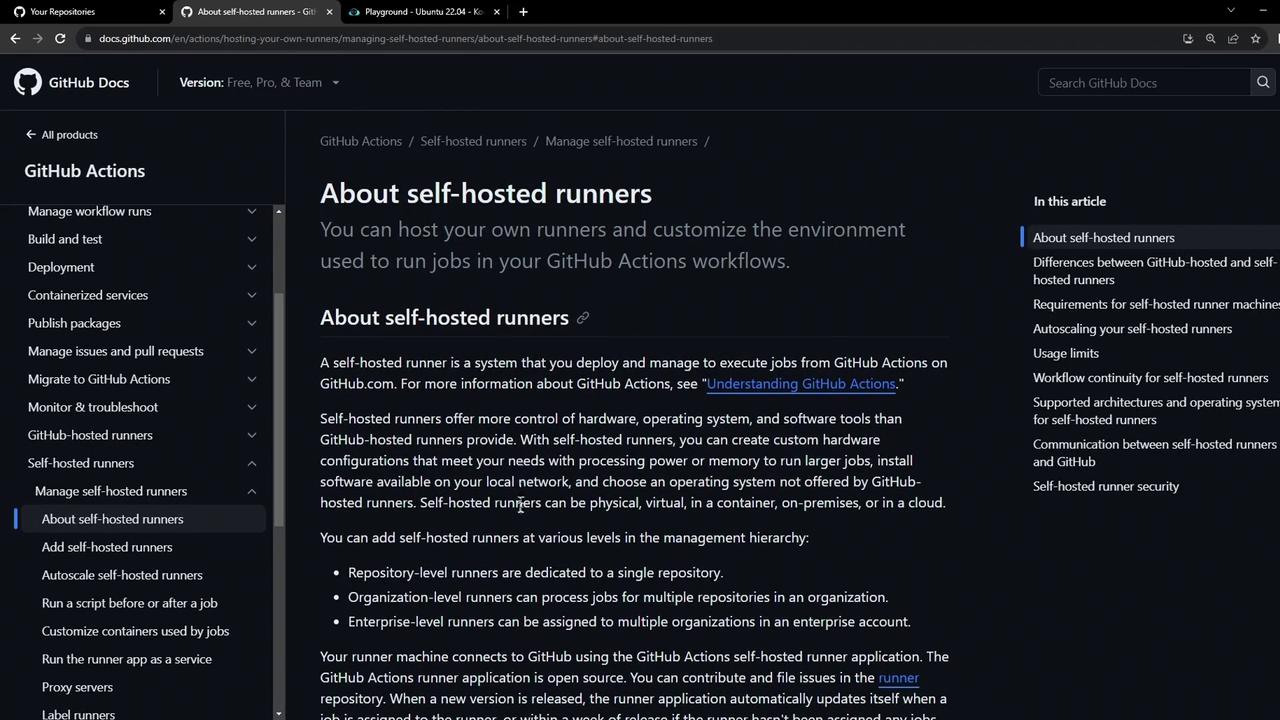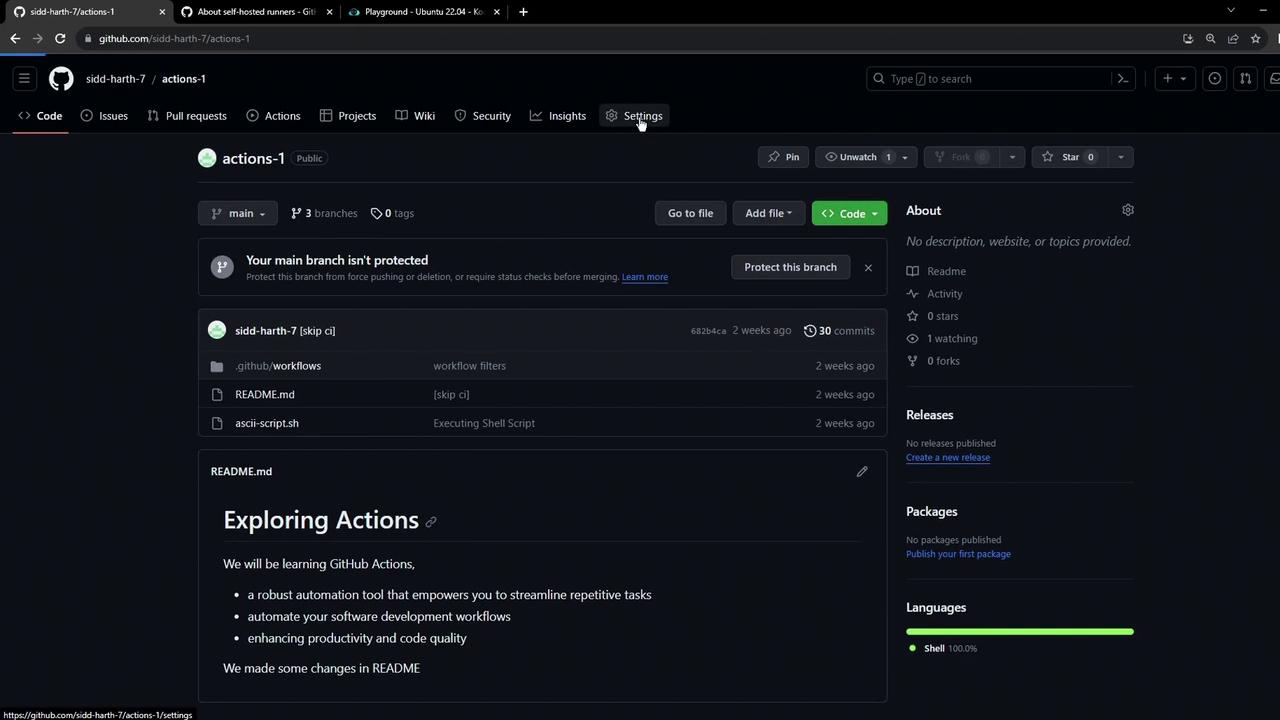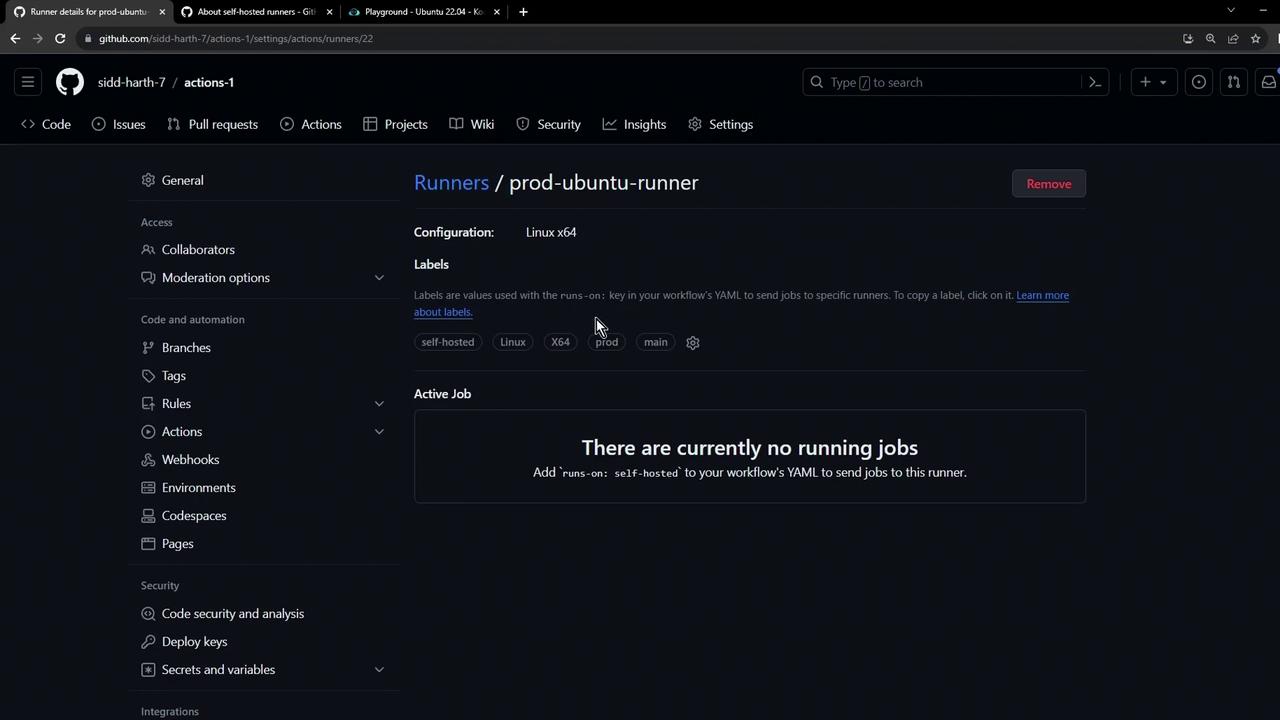GitHub Actions
Self Hosted Runner
Installing a Self Hosted Runner
This guide walks you through attaching a self-hosted runner directly to your GitHub repository. While organization- and enterprise-level runners are possible, this tutorial focuses on repository-level setup for Linux.
Refer to the official GitHub docs for detailed requirements, auto-scaling, limits, and best practices: Hosting your own runners.

1. Add a New Self-Hosted Runner in GitHub
- In your repository, go to Settings → Actions → Runners.
- Click New self-hosted runner.
- Select Linux as the OS and x64 as the architecture. GitHub then displays the setup commands.

Available Runner Platforms
| Operating System | Architecture |
|---|---|
| Linux | x64 |
| macOS | x64, ARM |
| Windows | x64, ARM |
2. Install the Runner on Your Linux VM
Open a terminal and execute:
# 1. Create and enter a directory for the runner
mkdir actions-runner && cd actions-runner
# 2. Download the latest runner package
curl -o actions-runner-linux-x64-2.310.2.tar.gz -L \
https://github.com/actions/runner/releases/download/v2.310.2/actions-runner-linux-x64-2.310.2.tar.gz
# 3. (Optional) Verify checksum
echo "fb23a1c715ea0c501fa60beefcf295e26cfbbf849f3 actions-runner-linux-x64-2.310.2.tar.gz" \
| sha256sum --check
# 4. Unpack the archive
tar xzf ./actions-runner-linux-x64-2.310.2.tar.gz
Note
Ensure your VM meets the runner requirements: at least 2 CPU cores, 8 GB RAM, and Docker if you plan on containerized jobs.
After extraction, verify the scripts:
ls
# bin config.sh env.sh externals run-helper.cmd.template \
# run-helper.sh.template run.sh safe_sleep.sh
3. Configure the Runner
Use the registration token provided in the GitHub UI:
./config.sh --url https://github.com/your-username/your-repo \
--token YOUR_TOKEN_HERE
Warning
By default, running the runner as root is disabled for security. To override (at your own risk), export:
export RUNNER_ALLOW_RUNASROOT=1
Follow the interactive prompts:
GitHub Actions self-hosted runner registration
✓ Connected to GitHub
Enter the name of runner group: [Default]
Enter name of runner: [press Enter for ubuntu-host] prod-ubuntu-runner
Labels: self-hosted, Linux, X64
Enter additional labels (comma-separated): [skip]
✓ Runner successfully added
✓ Runner connection is good
Enter work folder name: [press Enter for _work]
4. Verify the Runner in GitHub
Return to Settings → Actions → Runners and refresh. You should see prod-ubuntu-runner listed (initially offline):

5. Start the Runner
Launch the runner process:
./run.sh
Sample output:
Current runner version: '2.310.2'
2023-10-24 14:51:44Z: Listening for Jobs
After a moment, refresh the GitHub Runners page—it should display online and idle, ready to accept jobs.
Links and References
Watch Video
Watch video content